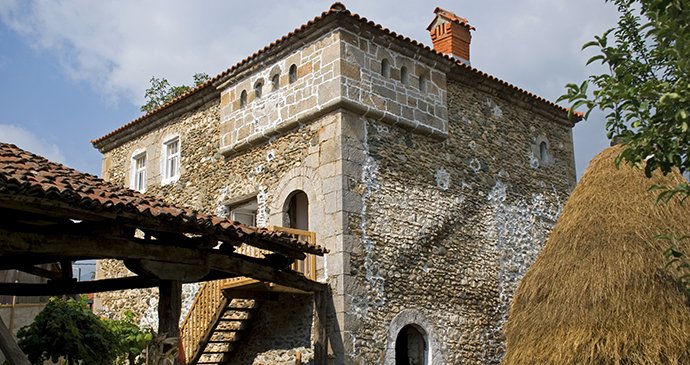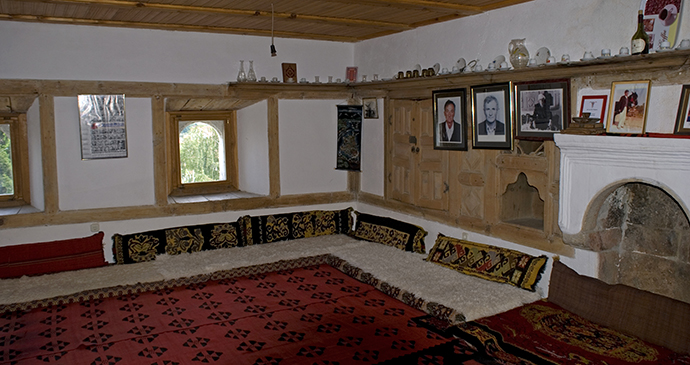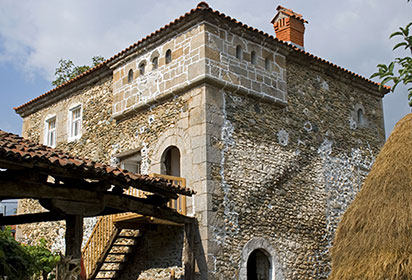Written by Verena Knaus and Gail Warrander

The Albanian word kulla derives from the Turkish word for ‘tower’. The traditional kulla is a fortified tower, usually two or three storeys high with thick stone walls on a square shape. Some kullas have walls as thick as 1m. The ground floor has no windows to protect it from intruders and was commonly used as a barn for cattle. In most kullas, the family’s living quarters are on the second floor and the men’s guestroom on the third, accessible directly by a small staircase. In peaceful times, families would sleep in separate buildings next to the kulla. In the towns in the early 20th century, kullas were increasingly built of brick.

The instability and insecurity of the late 18th and early 19th centuries in western Kosovo in particular led to a real boom in the construction of kullas. In some villages like Junik or Drenoc near Deçan, every family would have a kulla surrounded by high stone walls. Walking through such villages felt like walking through a medieval town. As unique symbols of Albanian architectural heritage, kullas were singled out during the 1999 war as targets for destruction.
There is a beautifully preserved and partially restored historical zone in Drenoc village consisting of kullas and traditional stone walls. Drenoc offers a unique Albanian experience: a reasonably priced overnight stay in a traditional kulla. Drenoc is also a good base from which to explore the area and to make day trips to Peja, Deçan, Gjakova and Prizren.
Learn more about the kullas with our guide to Kosovo:

